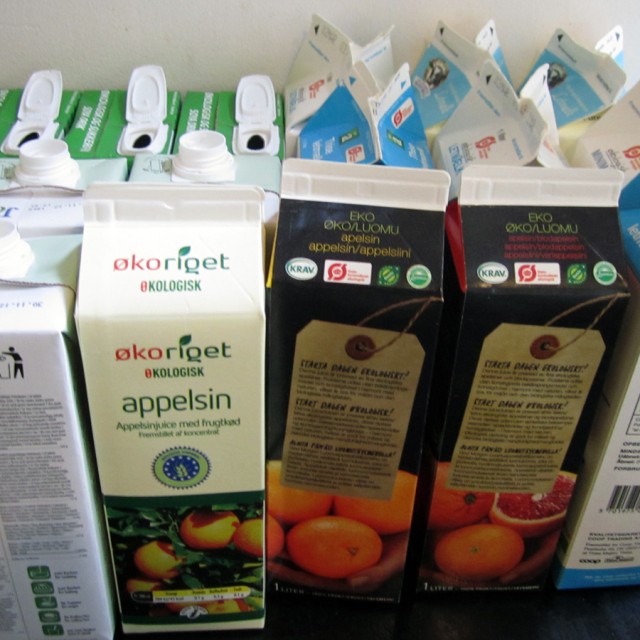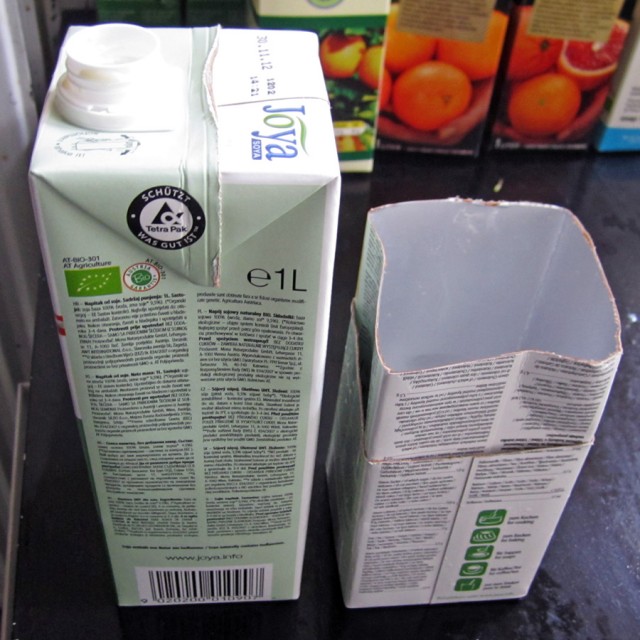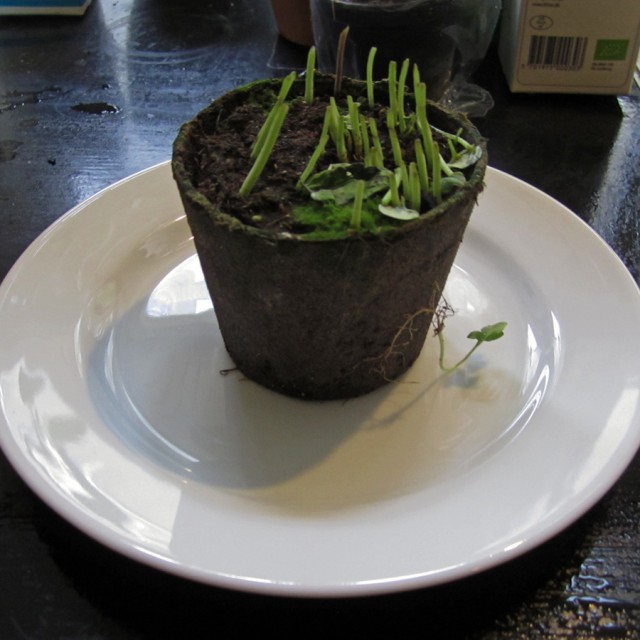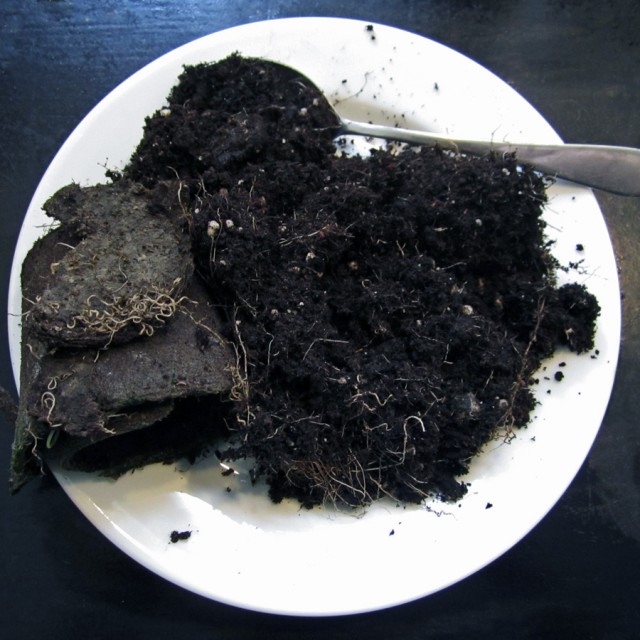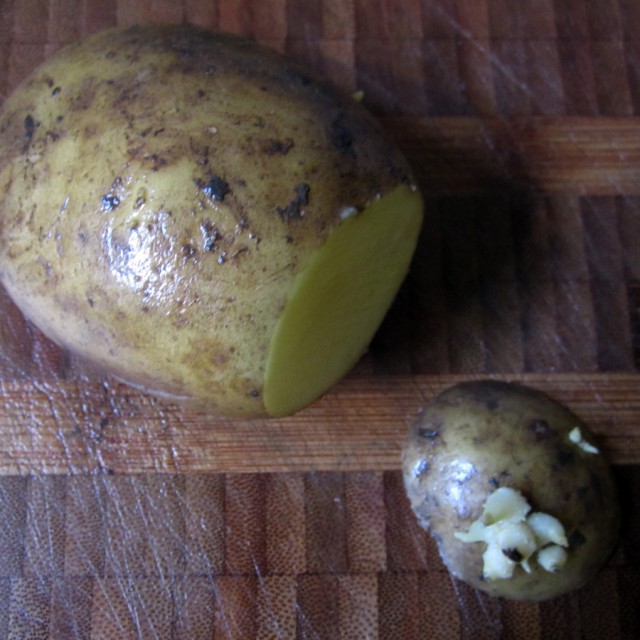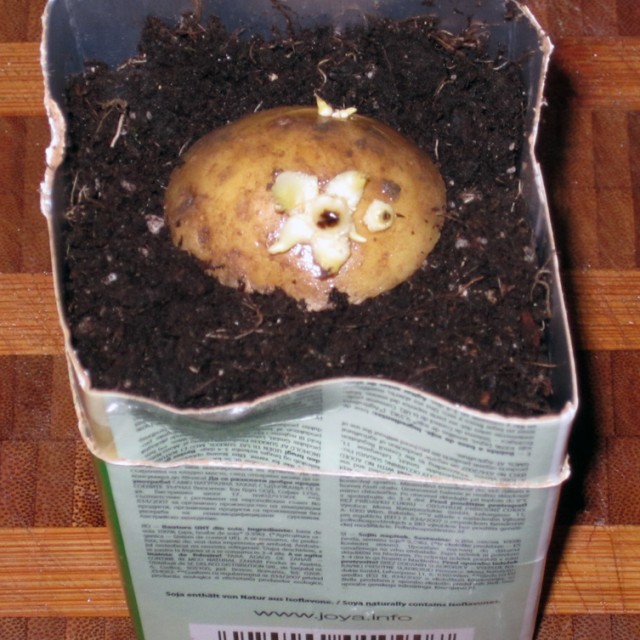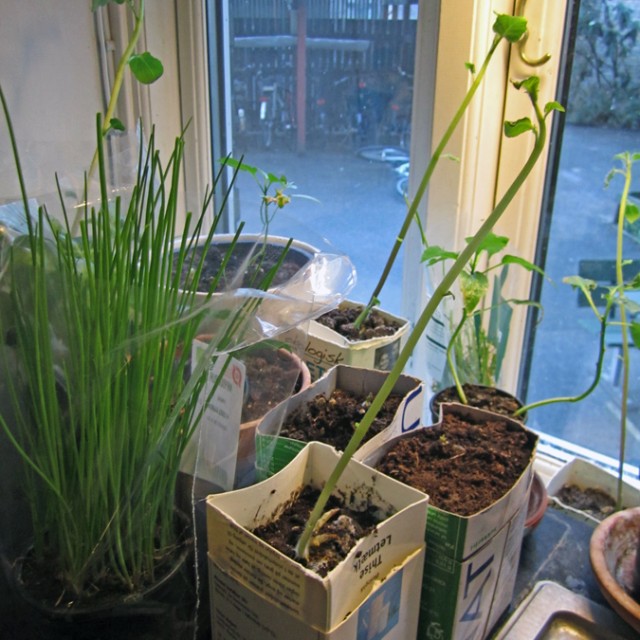Seed starts + simple kitchen reuse
It’s March and spring is slowly coming around. The start of spring means preparing seedlings for the coming growing season. We may have an outdoor garden this year (crossing our fingers) and in the hopes of that we are starting seeds in our kitchen window.
We always have a surplus of 1 liter milk, juice, and soy milk containers. We have been saving ours for several weeks now and have quite a collection. They make perfect mini planters for starting seeds and planting potato starts.
We cut the cartons in half and insert the top half down into the bottom half leaving the container open so water can drain away from the soil.
We often use the soil that is leftover from the herbs we get from either the store or our food co-op. The herbs come like this one does with very rich soil housed in a biodegradable container.
You just remove the soil from the container and break it down with your hands or a spoon. Take the biodegradable container and break it up and shove it down into the bottom of one of your milk carton planters. This will help the drainage of the water from the soil down into the bottom of the container. Spoon the soil in and you are ready to plant.
You can get a lot of your plant starts by harvesting seeds from vegetables you have in your kitchen. You can save seeds from tomatoes, peppers, watermelon, cantaloupe, cucumbers, green beans and more. Potatoes are extremely easy to grow from the little “eyes” that appear if they have been sitting around for too long.
Cut the eye from the rest of the potato, making sure to cut so that a couple of centimeters (or 3/4 of an inch) remain. Eat the rest of the potato and plant the small part with the “eye.”
Put your start on top of the soil in your newly made planter. Put enough soil on top of the potato slice to just barely cover it. It is alright if the eye is poking through the soil. Add water and put your start in a place where it will get plenty of light and remain relatively warm.
The potato starts are doing the best out of everything we have growing. They really thrive in the deep soil of the containers. When it gets warm enough, we will pull the containers apart, cut off the bottoms, and plant them in the soil directly, disturbing the root system of the plant as little as possible. The container probably won’t break down very much and can be removed later when you harvest your potatoes.
Radio Aktiv Sonic Deep Map (2013)

SUPERKILEN – Extreme Neoliberalism Copenhagen Style

Read Brett's essay about the park.
Download our guide:

This is our guide to how-to books from the counterculture of the 60s and 70s. Click to get the download page.
Categories
- Agriculture (11)
- Animal sounds (1)
- Artist parents (19)
- Arts and culture (106)
- Bees (3)
- Book reviews (14)
- Books (18)
- Critical essays (5)
- Daily Photo (5)
- Design (36)
- Dirt (11)
- Environmental activism (43)
- Exhibitions (24)
- Farms (11)
- Forest (7)
- Friday connect (15)
- Growing (42)
- Habitat (38)
- Homesteading (16)
- Interviews (15)
- Kitchen (14)
- Living structure (9)
- MISC (15)
- Mythological (2)
- Neighborhood (83)
- Ocean News (1)
- Our Art Work (21)
- Personal – Design/Art (3)
- Play (2)
- Playground (4)
- Projects (21)
- Public space (53)
- Resilience (13)
- Sea Side (2)
- Sojabønner (2)
- Tofu (8)
- Vermont correspondence (7)
- Water (3)
- Wednesday picture (31)
- Workshop (1)
Video interview:

Watch our interview of SeedBroadcast, a mobile project that is part seed library and part seed-saving-story-collecting machine-recording the stories of seed saving, farming, and food sovereignty work being done around the US.

Download a poster Bonnie made about biodiversity in a vacant lot in the Amager borough of Copenhagen, in collaboration with biologist, Inger Kærgaard, ornithologist, Jørn Lennart Larsen and botanist, Camilla Sønderberg Brok: A BRIEF TAXONOMY OF A LOT

We made and installed a network of bat houses in Urbana, Illinois, to support the local and regional bat population, but also to begin a conversation about re-making the built environment.
READ MORE
BOOK REVIEW:

We write often about artists and art groups that work with putting ‘culture’ back in agriculture. Here is a new favorite: myvillages, a group of three women based in Germany, the Netherlands, and the UK. Read more...

Post Revolutionary Exercises
We really admire the dedicated hard work of Kultivator who seeks to fuse agriculture and art in their work. Click this sentence to get a PDF of their poster collection called "Post Revolutionary Exercises."

Cultural Practices Within And Across
This amazing book networks urban and rural resilience and sustainability projects around the world. Deeply inspiring projects in Romania, Paris, San Francisco, and elsewhere.
• Read our review of the book.
• Buy the book.
• Download the book.

